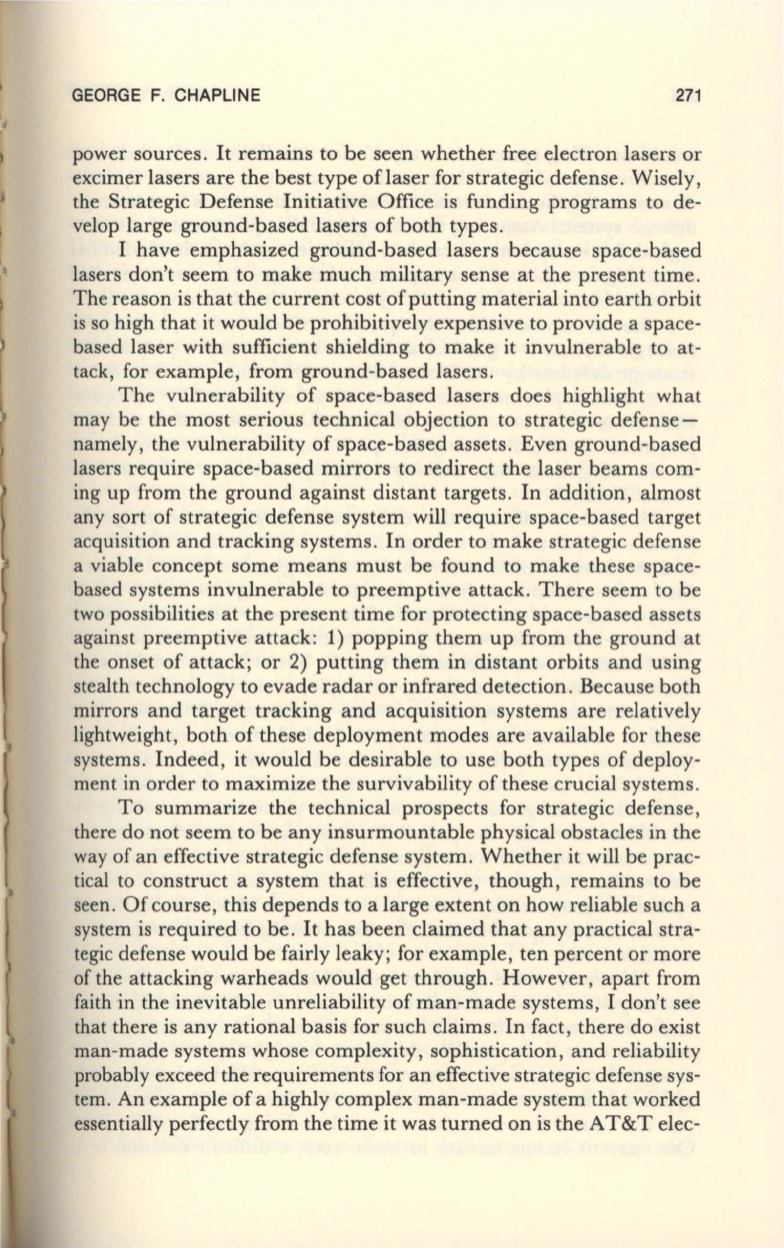
GEORGE F. CHAPLINE
271
power sources. It remains to be seen whether free electron lasers or
excimer lasers are the best type oflaser for strategic defense. Wisely,
the Strategic Defense Initiative Office is funding programs to de–
velop large ground-based lasers of both types.
I have emphasized ground-based lasers because space-based
lasers don't seem to make much military sense at the present time.
The reason is that the current cost of putting material into earth orbit
is so high that it would be prohibitively expensive to provide a space–
based laser with sufficient shielding to make it invulnerable to at–
tack, for example, from ground-based lasers .
The vulnerability of space-based lasers does highlight what
may be the most serious technical objection to strategic defense–
namely, the vulnerability of space-based assets. Even ground-based
lasers require space-based mirrors to redirect the laser beams com–
ing up from the ground against distant targets . In addition, almost
any sort of strategic defense system will require space-based target
acquisition and tracking systems. In order to make strategic defense
a viable concept some means must be found to make these space–
based systems invulnerable to preemptive attack. There seem to be
two possibilities at the present time for protecting space-based assets
against preemptive attack: 1) popping them up from the ground at
the onset of attack; or 2) putting them in distant orbits and using
stealth technology to evade radar or infrared detection. Because both
mirrors and target tracking and acquisition systems are relatively
lightweight, both of these deployment modes are available for these
systems. Indeed, it would be desirable to use both types of deploy–
ment in order to maximize the survivability of these crucial systems .
To summarize the technical prospects for strategic defense,
there do not seem to be any insurmountable physical obstacles in the
way of an effective strategic defense system. Whether it will be prac–
tical to construct a system that is effective, though, remains to be
seen. Of course, this depends to a large extent on how reliable such a
system is required to be. It has been claimed that any practical stra–
tegic defense would be fairly leaky; for example, ten percent or more
of the attacking warheads would get through. However, apart from
faith in the inevitable unreliability of man-made systems, I don't see
that there is any rational basis for such claims. In fact, there do exist
man-made systems whose complexity, sophistication, and reliability
probably exceed the requirements for an effective strategic defense sys–
tem. An example of a highly complex man-made system that worked
essentially perfectly from the time it was turned on is the AT&T elec-


